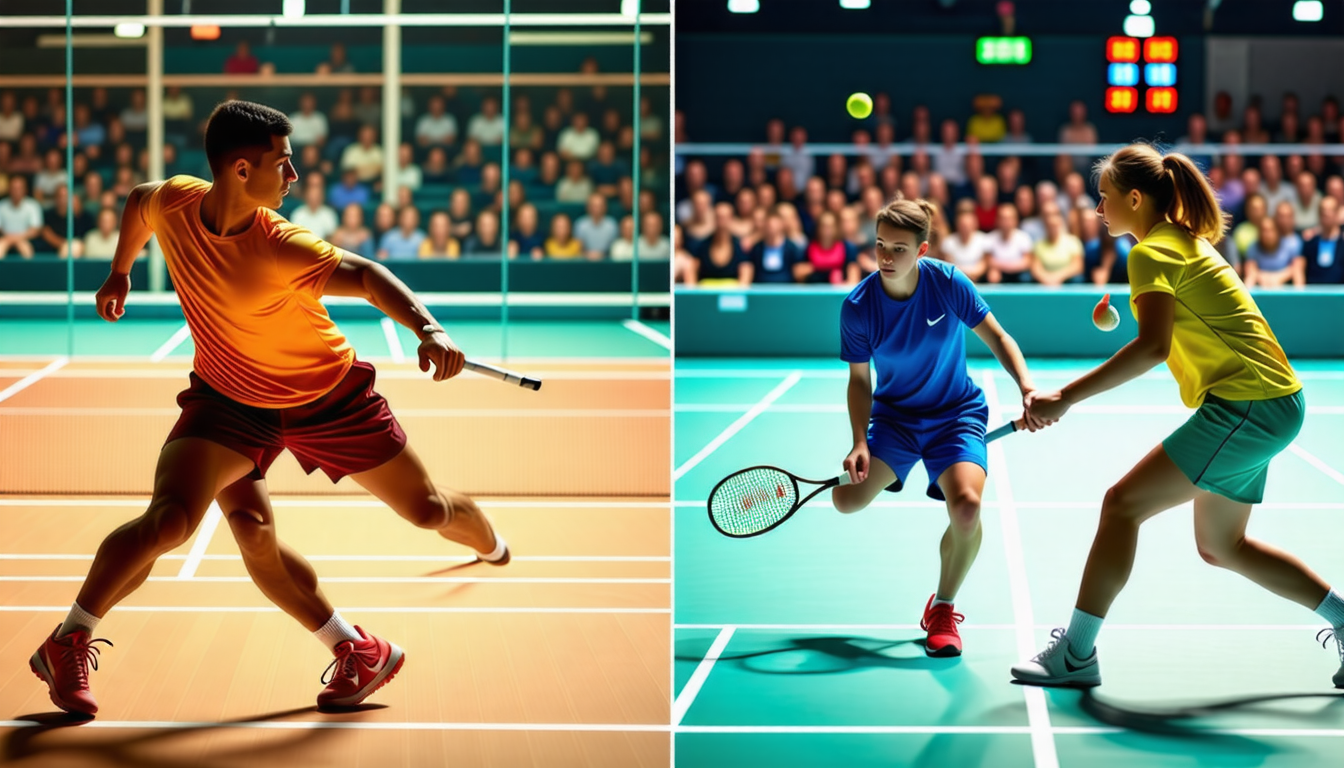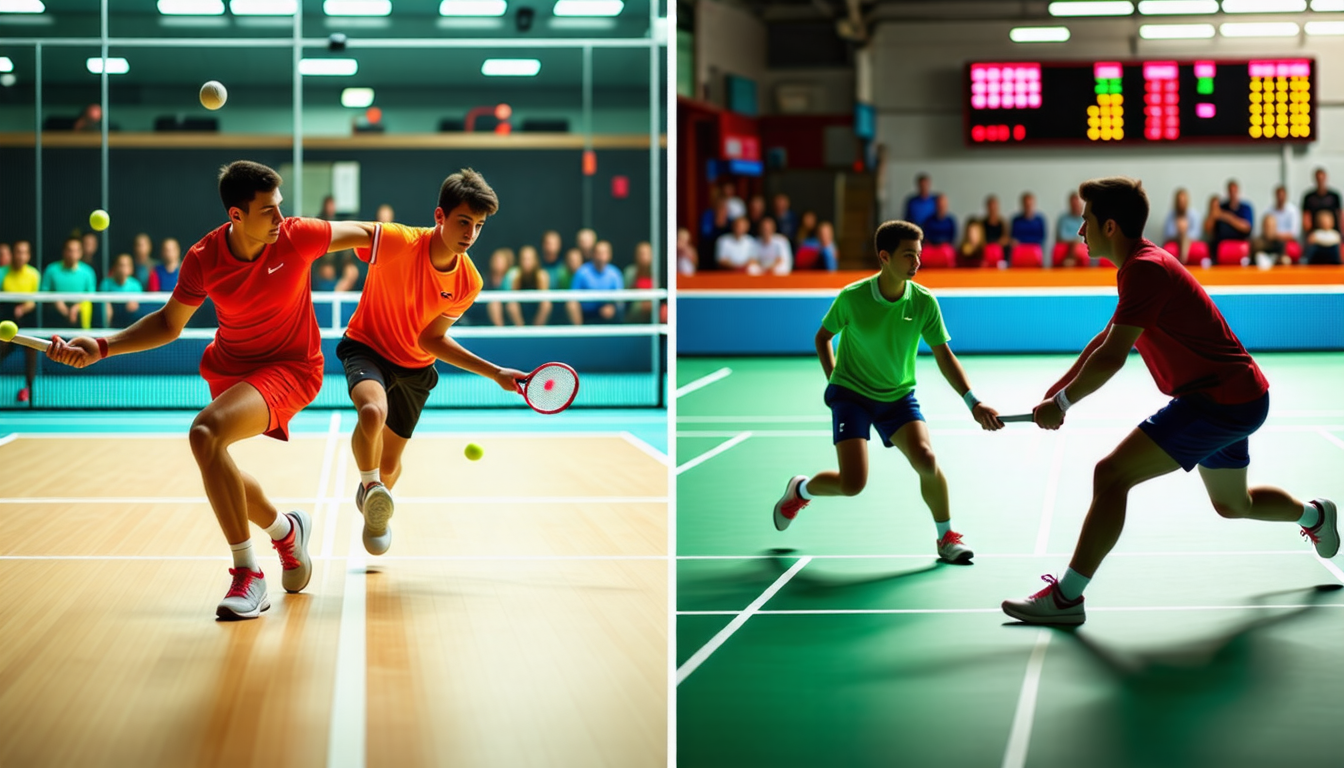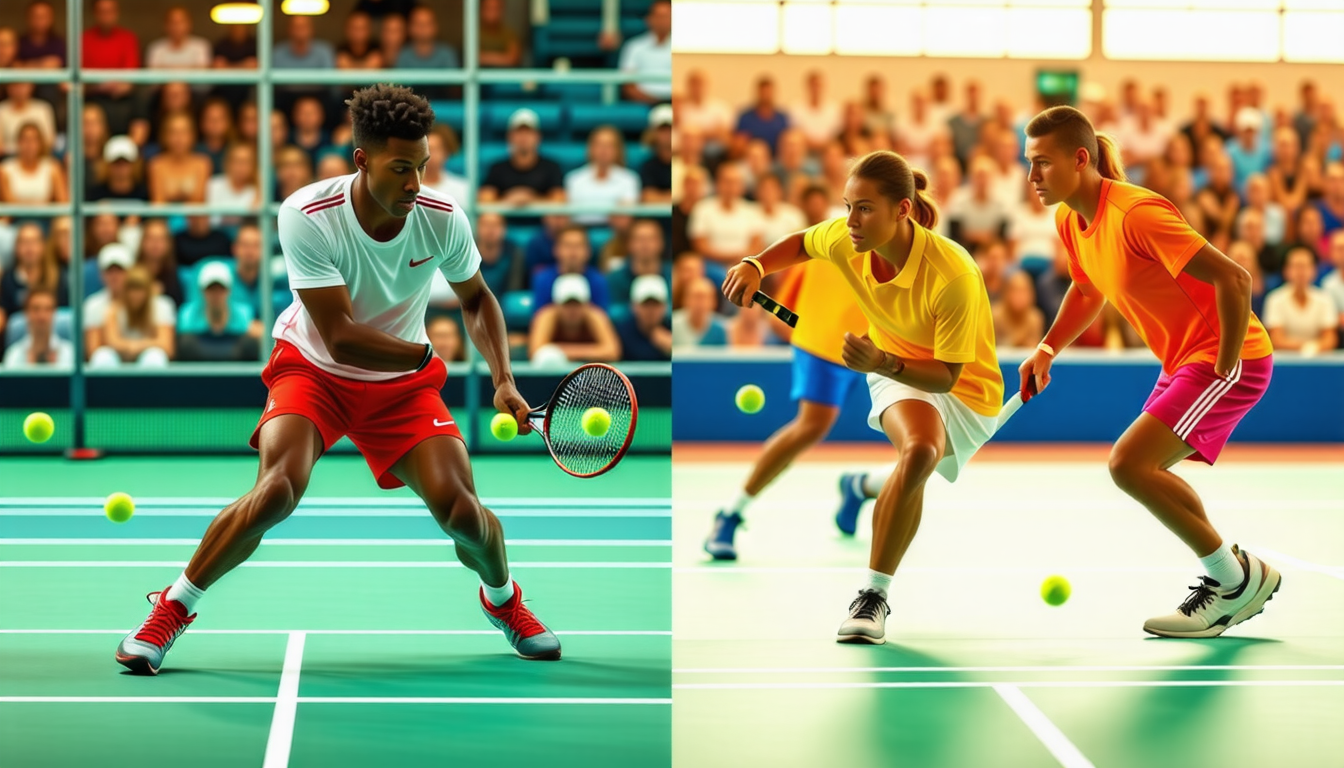|
IN BRIEF
|
Squash is a sport that, while seemingly simple, unfolds a complex tapestry of strategy and skill, particularly when contrasting singles and doubles play. The subtle intricacies of how the ball interacts with the walls, alongside the differences in court dimensions and player dynamics, create two distinct playing experiences. In singles, the focus resides solely on the individual—each player must possess a blend of endurance and tactical sharpness to outmaneuver their opponent. In comparison, doubles introduces the element of teamwork; players must harmonize their efforts, covering more ground and collaborating to outsmart their rivals. Understanding these differences not only enhances gameplay but also enriches our appreciation of this fast-paced, exhilarating sport.

The world of squash is broadly categorized into two formats: singles and doubles. Though both versions share fundamental principles, various elements set them apart, influencing gameplay, strategy, and even player requirements. Understanding these distinctions is essential for players wishing to excel in either format or simply appreciate the sport at a deeper level.
Final Thoughts on Differences
In essence, while singles and doubles squash share the same foundational elements, the distinctions are vast and multifaceted. From court dimensions and equipment to player dynamics and training methods, each format offers players unique challenges and rewards. Understanding these differences is essential for any enthusiast looking to navigate the world of squash effectively, regardless of whether they prefer the solitary pursuit of singles or the collaborative excitement of doubles.
Wider Opportunities for Shots
With the additional width, teams in doubles have greater opportunities to exploit space. Players can strategically position themselves to cover more ground and employ a wider variety of shots. The trajectory of the ball also changes considerably upon impact with the front wall, as the angles available for return shots can differ drastically when compared to singles play. Consequently, this necessitates an understanding of the best angles and shot selection, ensuring that teams can capitalize on each other’s positions.

In the world of squash, the distinctions between singles and doubles play are crucial for players and enthusiasts alike. The most significant difference is the size of the court; a doubles court is 1.22 meters (4 feet) wider than its singles counterpart. This added width influences gameplay, providing more opportunities for strategic positioning and teamwork among players.
Moreover, the ball trajectory also changes between singles and doubles. In singles, players often rely on precise ball placement and angles to outmaneuver their opponent. Conversely, in doubles, the hardball utilized travels at an incredibly fast speed, requiring players to adapt quickly, as it does not deform upon impact like a softer ball. This adaptation necessitates strength in racquet choice; doubles racquets are typically built stronger to handle the intense kinetic energy of the game (source).
Furthermore, playing doubles enhances one’s singles game significantly. The skill sets developed in doubles play, such as communication and positioning, can directly improve individual performance. Hence, mastering doubles is not only a fun way to enjoy the sport but also beneficial for your overall squash proficiency (source).

In the dynamic world of squash, the distinction between singles and doubles play is pivotal for both players and enthusiasts. The most apparent difference lies in court dimensions; a doubles court is 1.22 meters wider than its singles counterpart, facilitating more complex teamwork and strategy. Additionally, the use of a hardball in doubles demands a more robust racquet, optimized for handling the ball’s high-speed trajectory. This speed also impacts gameplay; doubles requires agility and collaboration, with each player needing to effectively communicate and position themselves strategically. As a result, while singles focuses on individual skill, doubles emphasizes team dynamics and a shared approach to the game. Understanding these nuances enriches players’ appreciation of both formats.
What is the main difference in court size between singles and doubles squash?
R: The doubles squash court is significantly larger, with a width of 1.22 meters (4 feet) more than a singles court. However, both courts share the same length, which adds a unique dynamic to the gameplay in doubles.
How does the ball’s behavior differ in singles versus doubles squash?
R: In doubles squash, the ball’s trajectory upon impact with the front wall differs subtly compared to singles. The hardball used in doubles travels at a much faster speed, impacting the strategies players employ and how they position themselves on the court.
What are the key characteristics of a doubles squash racquet?
R: A good doubles squash racquet is engineered to be stronger than a standard singles racquet. This is due to the increased kinetic energy of the hardball, making it essential for doubles players to use racquets capable of handling the high-speed exchanges.
Does playing doubles improve singles performance?
R: Yes, being skilled at doubles can significantly benefit a player’s singles game. The teamwork and strategic understanding gained from doubles play can enhance overall court awareness and shot selection.
What are some strategic differences when playing doubles squash?
R: In doubles squash, players must focus on coordination with their partner and court coverage. Unlike singles, where players can engage in more individual tactics, doubles requires an understanding of positioning, communication, and supporting one another to maximize efficiency and effectiveness on the court.

